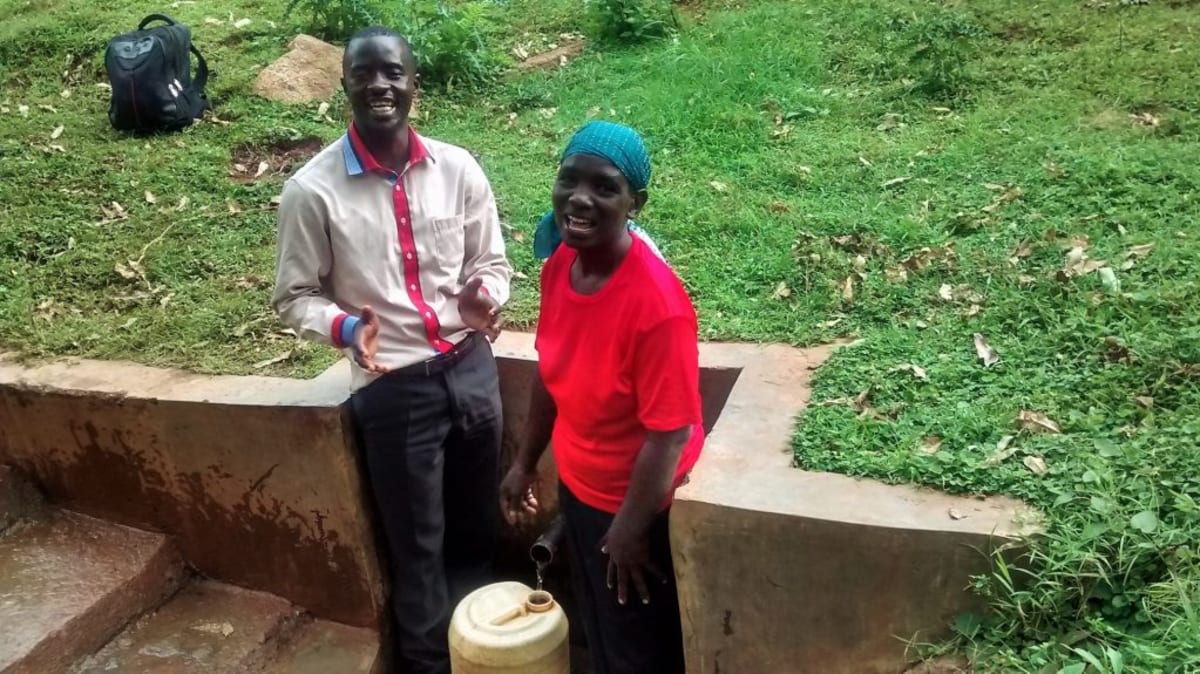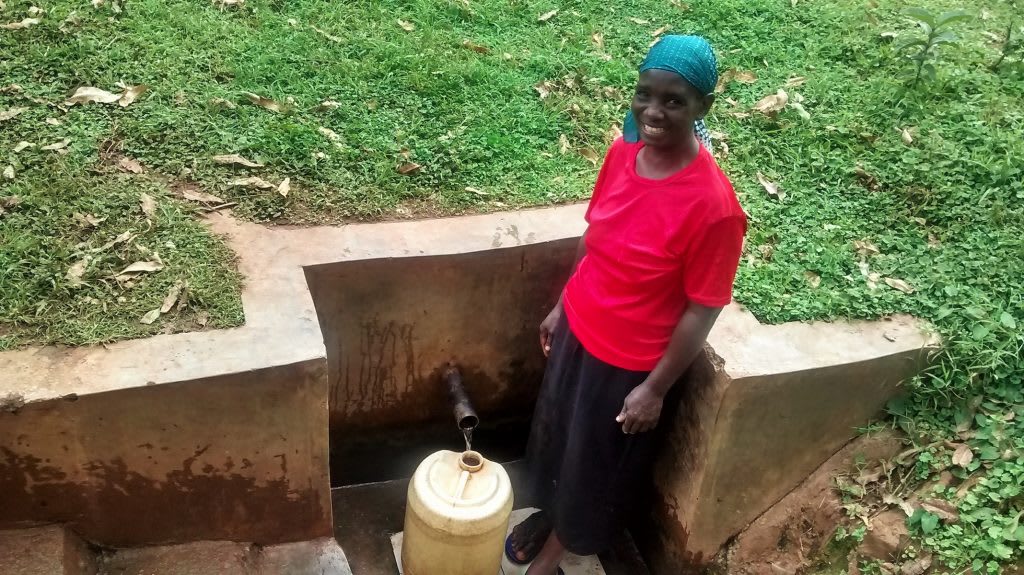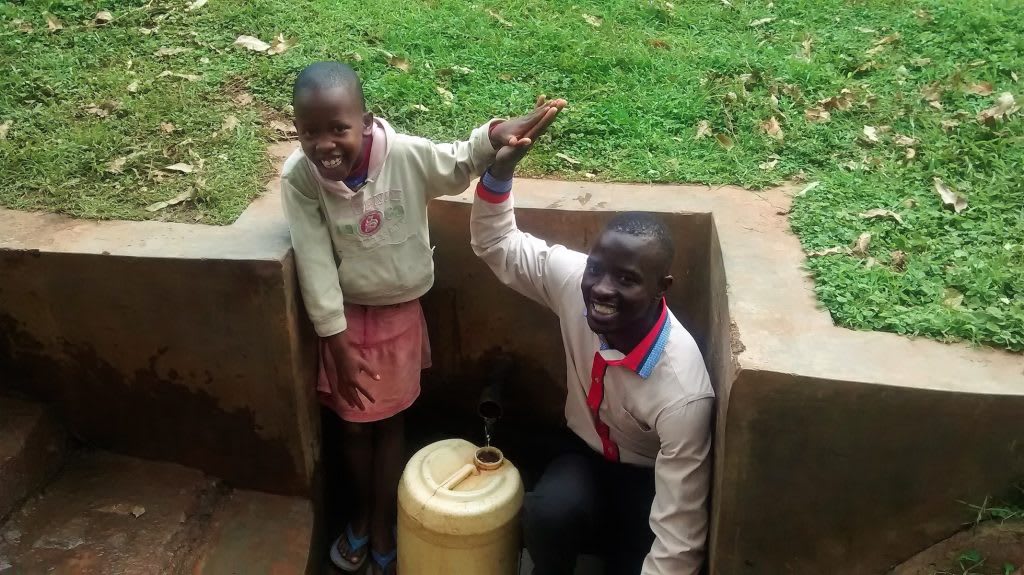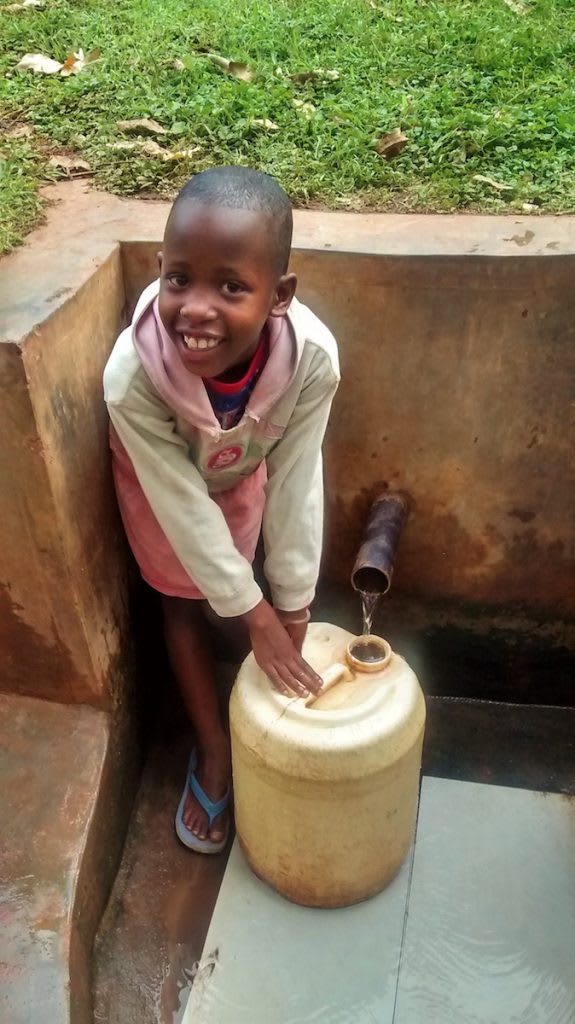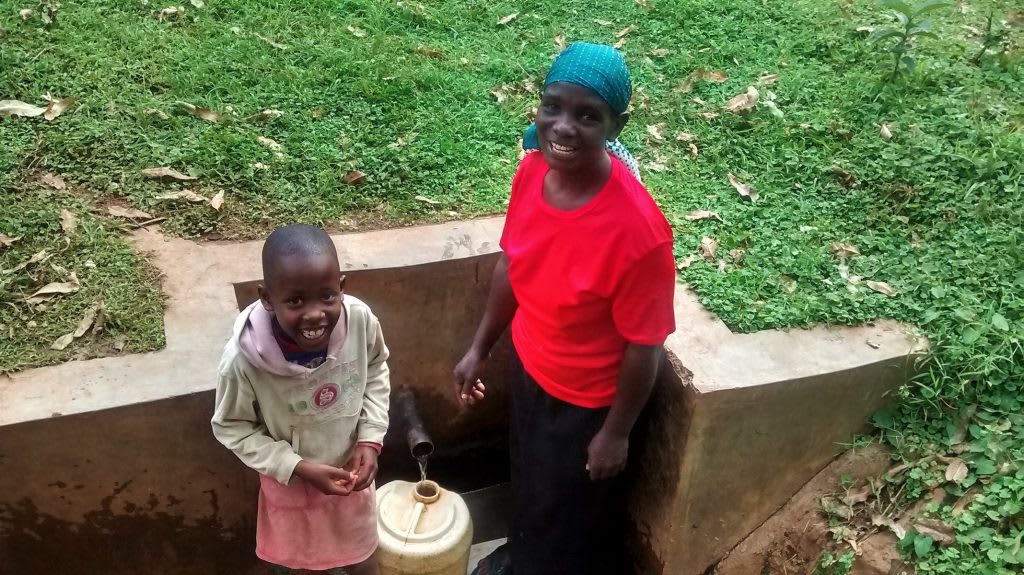This project is a part of our shared program with Western Water and Sanitation Forum (WEWASAFO). Our team is pleased to directly share the below report (edited for clarity, as needed).
Welcome to the Community
This unprotected spring is located on Mr. Alfred Igunza’s land, approximately three kilometers from Kidinye Secondary School where we built a rainwater catchment tank (click here to check out that project!). Geographically, it is found in Kidinye Village, Ikumba sub-location, Central Maragoli location of Vihiga County. The majority of families living around the spring are from the Maragoli people, a sub-tribe of the larger Luhya Tribe of Western Kenya. These people practice farming of different crops such as maize, cassava, tea and beans and raise animals such as poultry, local dairy animals, etc. Each family does this over a small piece of land though, since the area is highly subdivided because of its high population.
Water Situation
Though the area is densely populated, the spring is fortunately located in a rocky area that is free from most business and agricultural activities. Buyonga Spring serves over 20 different households, or about 150 people. The number of people relying on Buyonga Spring drastically increases during the dry seasons, since neighboring springs no longer flow.
Since Buyonga Spring is unprotected, it is open to contamination from many different sources. Though there are no farms with dangerous fertilizers and pesticides, we noticed that open defecation threatens the water. During the rains, any human or animal waste is washed into the spring's water. It is also contaminated by people who dip their hands and buckets into the water.
Moreover, it takes a long time to draw water from Buyonga Spring! If you look at the pictures in the "See Photos & Video" section, you will see that the community has improvised a discharge pipe. This small pipe only yields a little water and is located inconveniently low.
Women and children are those seen most at the spring to fetch water. They use buckets and jerrycans, most of which do not have covers. Once home, the water meant for drinking is normally poured into a container with a lid, but that water was still open to contamination on the trip home.
Sanitation Situation
About 70% of families here have a pit latrine of their own. Most of these were too old; smelly, dirty, and almost full. As we walked around the community, we observed that open defecation is an issue, particularly near the farms. Not many households had a bathing room for personal hygiene, either.
We were not able to find any hand-washing stations, nor did we see any simple tools like dish racks or clotheslines. However, everybody got very excited when we mentioned the opportunity to learn about this during hygiene and sanitation training!
We met Judith Musera, a woman who helps her family on the farm every day. She was at the spring and told us "We do face a lot of health problems related to hygiene. Even more so during dry seasons when this spring is overwhelmed and hygiene standards in most households are obviously compromised due to water scarcity." Without enough water, people can't keep clean.
The biggest problem in this community is malaria, though. The majority of people lack mosquito nets, and those who have them don't have enough to protect everyone in the home. Mary Magoka, another mother here, said that the "poverty index in this region is still high. Some households are headed by either children or the elderly because of the HIV/AIDS pandemic that has swept their parents away." Any assistance to this community will be greatly appreciated.
Plans: Hygiene and Sanitation Training
Community members will be trained for two days on a variety of health, hygiene and sanitation topics. This training will result in community members donning the roles of health workers and water user committee members. The training facilitator plans to use PHAST (Participatory Hygiene and Sanitation Training), CLTS (Community-Led Total Sanitation), and ABCD (Asset-Based Community Development) methods to teach community members, especially the women and children who feel the burden of household responsibility. Training will equip each person with the knowledge needed to practice viable and effective health solutions in their homes and at the spring. It will also result in the formation of a committee that will oversee and maintain their new spring protection system. They will take up activities such as digging extra drainage and fencing to protect the spring from wild animals. Other training participants will take up the gauntlet of health promotion; they will be community health workers responsible for teaching others about the good hygiene and sanitation practices they learned during training.
During training, we will take this community on a transect walk to sensitize them to some of the more serious health threats. The transect walk will teach locals to watch for practices that go on and facilities that are present related to good health and hygiene. Sometimes, a participant feels shame when the group arrives at their household and points out things that are unhealthy or unhygienic; but in Kenya, this affects people to make a positive change. Training participants will also vote on and decide the families that should benefit from the five new sanitation platforms.
Plans: Sanitation Platforms
The five families chosen by the community will receive a sanitation platform, which is a concrete floor that makes a great foundation for a safe and clean latrine. These families will prepare by sinking a pit that the concrete slab can be placed over. These five new latrines will go a long way in reducing the level of open defecation in this community!
Plans: Spring Protection
Locals are eagerly preparing for this spring protection project. They have agreed to gather the local materials needed for construction to begin, which include sand, ballast, hardcore, bricks, fencing poles, and even a few helpful hands.



 Rehabilitation Project
Rehabilitation Project




























